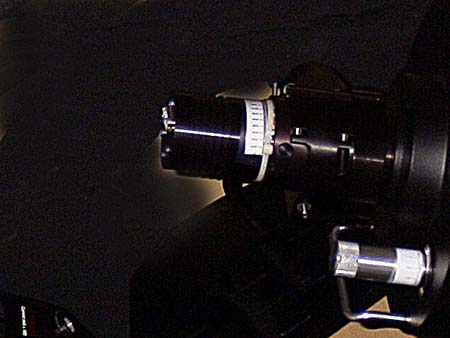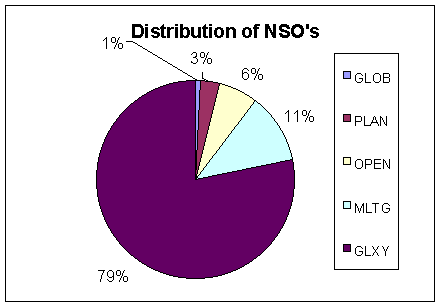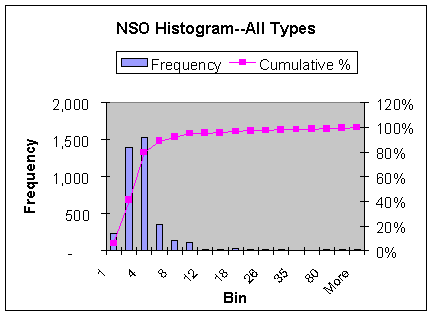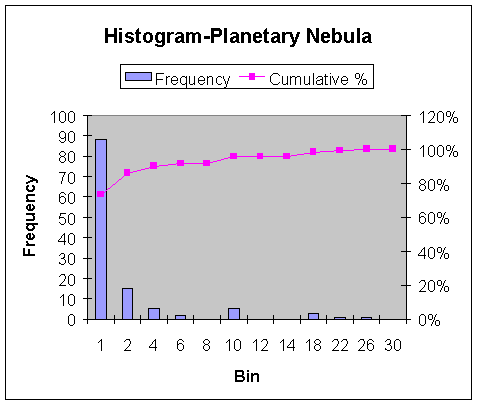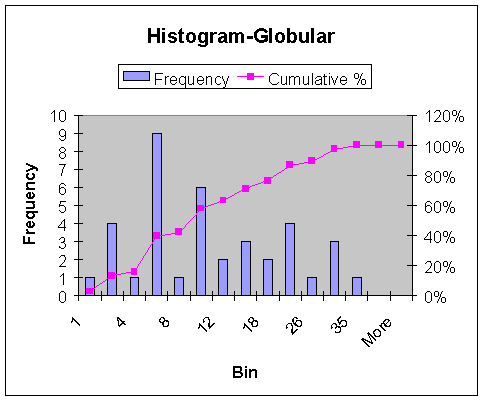|
These
charts summarize some size statistics for non-stellar objects brighter
than magnitude 14. There are about 4,000. Chart #1 shows
that 90% are galaxies or multiple galaxy systems. 6% are open clusters
and the rest are planetary nebula or globular clusters.
Chart
#2 through #4 are histograms of the angular size of these objects.
The "Bin" is the angular size in arc-minutes. The vertical bars are
a count of the number of objects in that bin. For example, in Chart
#2, 1,536 of the NSO objects counted have a angular size between 2 and
4 arc-min. And about 80% have a size less than or equal to 4 arc-min.
98% have a size less than or equal to 12 arc-min.
At
f3.3 the MX-5C has a diagonal field of view of about 33 arc-min.
So it can easily image over 98% of the NSO brighter than magnitude 14.
At f10, the MX-5C has a diagonal field of view of about 11 arc-min.
Charts
#3 and #4 show histograms for the size of planetary nebula and Globular
clusters. These show that the MX-5C can image all planetary nebula
and about 97% of the Globular clusters on LX 200 operating at f3.3.
All
in all I felt that this was pretty good performance. For those few
objects I could not image in a single frame, I could always mosaic the
images or put my Nikon film back on the camera. |
